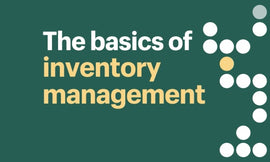(播放音乐)——在网上购物,returns are a major part of the buying process. I mean, just take a look at the data. 30% of all online purchases are returned. And most shoppers won't even buy from your store, unless you have an easy return policy. But at the same time, returns can be costly and time-consuming to manage. But don't worry. I'm here to help. I'm Tyler. I have my own Shopify store, and help other store owners grow their businesses. Over the years, I've learned how to use returns as a competitive advantage for my business. And today, I'm going to share those tips with you. So let's get started. The first tip is to create a return policy that attracts customers and keeps them coming back to your store. This usually means making returns free, easy, and no hassle for your customer. 92% of consumers will buy again if returns are easy. Although, you might not make a big profit on that first purchase, when your customer experience is good, you're more likely to have a higher customer retention and better long-term growth. It's also important to think about what products just can't be returned. Food and beauty products usually can't be resold. So in this case, you might want to add a refund option. So you don't have to go through that hassle of going through a return. Next, make your return policy easy to find. This means putting it basically everywhere. Your FAQ page, policy page, product page, and even in your order notification emails. Also remember to make the language simple, so customers aren't surprised or confused about what warrants a return and what doesn't. The next tip is to lower the chance of returns in the first place. Things like high quality product photos, videos, and descriptions really help with this. This way your customers are clear on what they're getting when they buy from you. If you're a clothing company, you can also use a fit or a size tool, so your customers can buy confidently. Post purchase order notifications are another great tool. This gives your customers another chance to double check their order. If your customer did mess up on their order, no sweat. You can correct it in your admin before fulfilling it. And finally, when a return does happen, have your process in place. For me, I focus on making sure the customer is still having a good experience, because without that, they probably won't buy from me again. But I also have all my systems in place in my admin, so I'm not spending a ton of time managing the return. When you make the return request, it's important to note the reason for the return. That way, you can improve your products and fulfillment processes over time. When you add the shipping return details, the return label and return instructions will automatically be emailed to your customer. Once the product is returned, you can restock it and refund the customer. Some business owners block off a time in their day or week just to focus on returns. That way, you can do a ton of returns all at once instead of taking them one at a time as they come in. Take some time now to think about how you can implement just one of these tips today. When done right, you can leverage returns as a competitive advantage for your business, while also spending less time and effort managing the return. Hopefully, this was helpful, and I'll see you next time.































